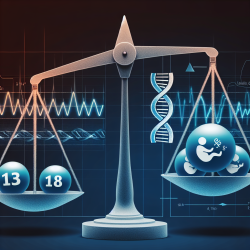Introduction
In the realm of pipeline integrity management, ensuring the reliability of external anticorrosive coatings is paramount. The research article titled "Application of Machine Learning in the Reliability Evaluation of Pipelines for the External Anticorrosion Coating" presents a novel approach to evaluating the reliability of these coatings. This blog post aims to distill the key findings of this research and explore how practitioners can leverage these insights to improve their skills and outcomes in pipeline maintenance.
The Limitations of Static Evaluation Methods
Traditional methods for evaluating pipeline coatings often rely on static evaluation techniques. These methods, while useful, fall short in addressing the dynamic nature of anticorrosive coatings. Static evaluations typically provide a snapshot in time, failing to capture the evolving risk levels and deterioration trends. This can lead to oversimplified conclusions and hinder effective decision-making.
Dynamic Evaluation through Machine Learning
The research introduces a dynamic evaluation model that integrates set pair theory and Markov chain analysis, implemented using Python-based machine learning software. This model allows for a more nuanced analysis of the anticorrosive coating's reliability by considering its deterioration over time. The use of machine learning enables practitioners to predict and intelligently analyze detection data, providing a more comprehensive understanding of the coating's condition.
Key Methodologies
- Set Pair Theory: This theory uses connection degrees to evaluate the relationship between different states of the coating, providing a detailed picture of its deterioration status.
- Markov Chain Analysis: By treating the corrosion process as a Markov chain, the model assesses the transition probabilities between different states, allowing for dynamic prediction of future conditions.
Practical Applications and Benefits
By adopting this dynamic evaluation model, practitioners can significantly enhance their ability to maintain pipeline integrity. The model provides a theoretical basis for pipeline maintenance within detection cycle requirements, ensuring that maintenance efforts are both timely and effective. Additionally, the integration of machine learning facilitates the continuous improvement of evaluation methods, adapting to new data and evolving conditions.
Encouraging Further Research
While the research presents a robust framework for dynamic evaluation, it also opens avenues for further exploration. Practitioners are encouraged to delve deeper into the application of machine learning in pipeline maintenance, exploring new algorithms and methodologies to enhance the accuracy and reliability of their evaluations.
Conclusion
The dynamic evaluation model presented in this research represents a significant advancement in the field of pipeline maintenance. By moving beyond static evaluations and embracing the capabilities of machine learning, practitioners can achieve more reliable and effective outcomes. For those interested in exploring the full details of this research, the original paper can be accessed here.










